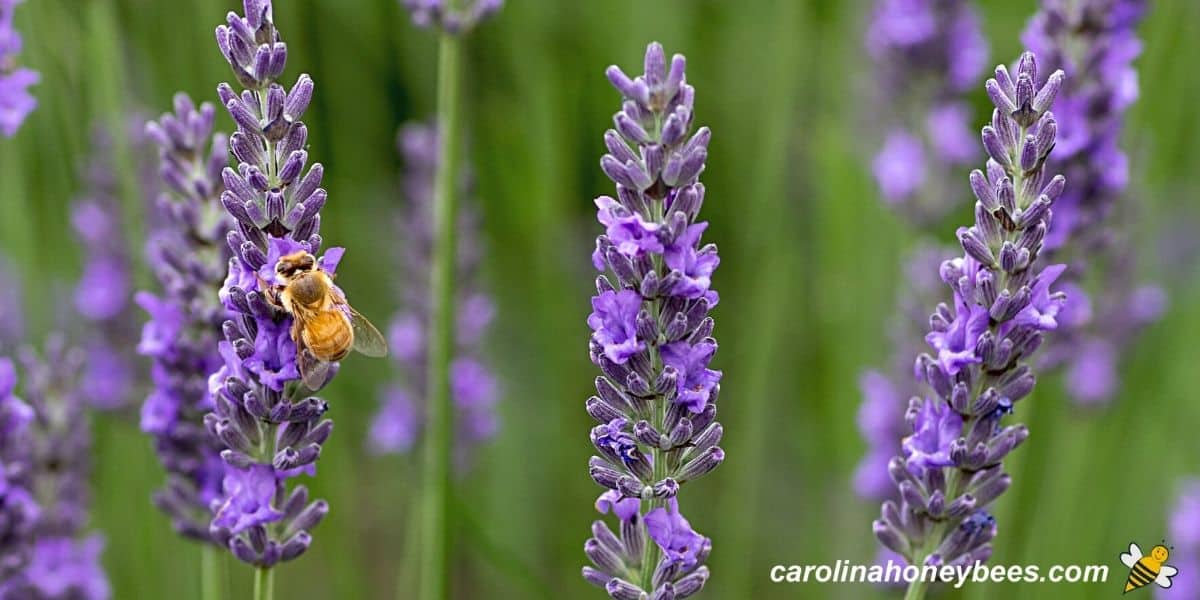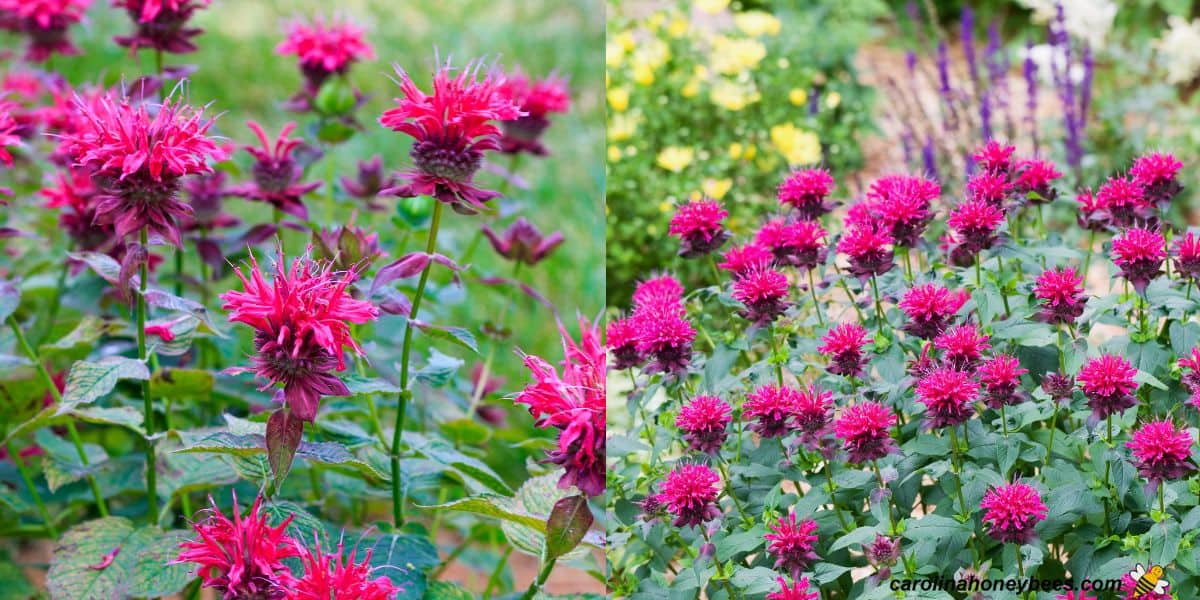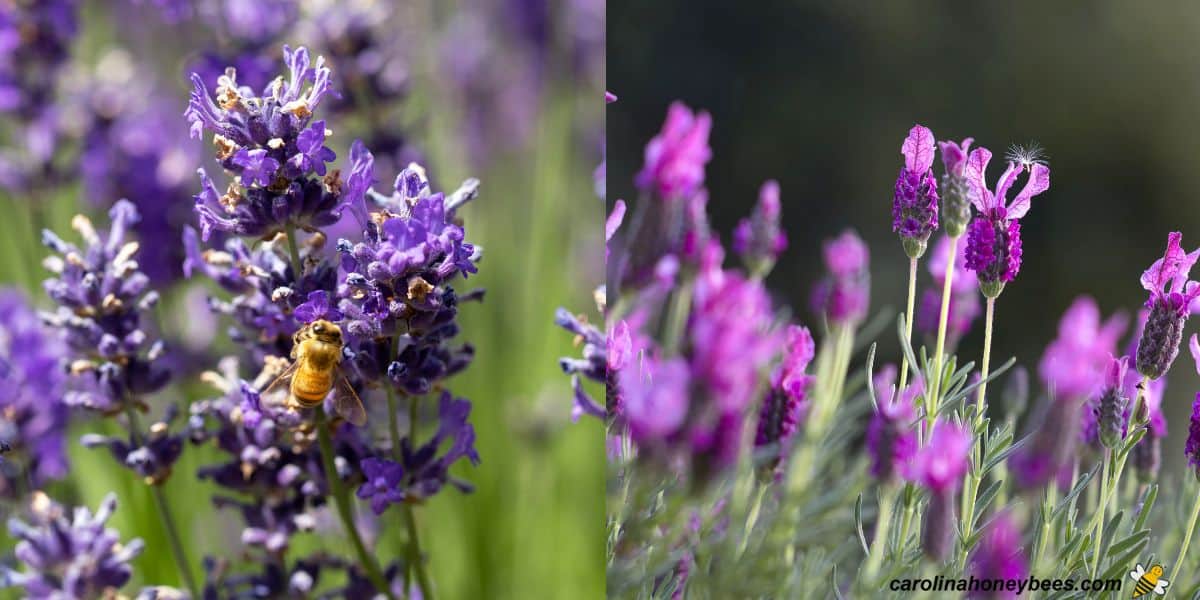Herbs for Bees
If you enjoy useful plants, consider planting some attractive herbs for bees. When in bloom, they attract a variety of pollinators – providing important nectar and pollen. Everyone enjoys a beautiful garden that provides useful plants – many of these can be used in the kitchen or for home remedies. When those plants also provide food for bees – that’s even better. Learn how to choose herbs that bees like best.

Whether you have a cottage garden with many favorites carefully placed or a wildland meadow, area pollinators will likely benefit. Including herbs in your bee friendly garden is a bonus for you and them.
How Herbs Attract Bees
Herbs attract bees by providing food to lure pollinators to their blossoms. This bee food may be nectar which bees use to make honey or pollen. Bees use pollen as a protein source – to raise baby bees.
When bees collect resources needed by the colony. They inadvertently pollinate the flowers. This pollination by bees allows the plant to produce seed.
Top Herb Choices for Bee Gardens
Herbs can be grown from seed. But, you may find plant starts at local garden shops. When choosing where to plant them – consider the needs of the plant. Most are very forgiving in regards to growing conditions, but some require more or less sun or water.
- Anise hyssop
- Basil
- Bergamot
- Borage
- Chives
- Lavender
- Lemon Balm
- Oregano
- Rosemary
- Sage
- Thyme
Anise hyssop (Agastache foeniculum)

This herb is a herbaceous perennial. It loses it’s leaves during Winter but comes back each Spring. Anise hyssop spread by rhizomes under the soil.
In my garden I grow a hybrid called “Black Adder”, it performs very well and blooms in late Summer.
This is a time when many other nectar sources are gone. Bees, hummingbirds and butterflies are attracted to my plants.
A member of the mint family, Anise hyssop is edible. Flowers and leaves can become a garnish on salads.
Leaves and flowers can be dried and used to make a black licorice flavored tea. It is often used when treating colds.
A relaxing bath can be made with the dried leaves of this herb. Place dried leaves in a cheese cloth bag or nylon hose. Let your bath water flow thru the bag while filling the tub.
Basil (Ocimum basilicum)

Basil is easy to grow outdoors during Summer. It is tender and must be planted after all threat of frost is gone.
It likes a sunny location with well-drained soil. This is a great companion plant for tomatoes in your homestead garden.
Bees love Basil and collect both pollen and nectar from the white to light-blue flowers.
Basil does well during hot weather if properly mulched. It provides food for bees to eat when other sources may be scarce.
Basil is another one of the culinary herbs. The leaves can be harvest and dried for storage. They can be used in many different kinds of recipes.
Bergamot – Bee Balm (Monarda citriodora).

Another summer blooming perennial, Monarda blooms from mid-summer until Fall.
This herb grows in clumps with showy flower heads. Easy to grow, they can have problems with Powdery Mildew so good air circulation is important.
There are several varieties of Monarda. Choose one that is suitable to your climate. Attractive to many types of bees, this herb provides nectar and pollen.
Monarda is the herb that flavors Earl Grey Tea. Boiling water is poured on the leaves and let steep for 10 minutes before drinking.
Borage (Borago officianlis)

This annual herb is recognized by its beautiful blue flowers. You can grow borage from seed to help feed bees.
Borage grows to a height of 2 feet – give them room. Another great companion plant, it is known to repel pests like horn-worms.
In the past, Borage was a major honey plant. Bees flock to the flowers to collect nectar. It is a real bee favorite.
True to the idea of “Herbs for Bees and You” Borage has many uses. The leaves can be used as a salad green, in soups, sauces and even as a vegetable.
It has a taste similar to cucumber and is used to flavor many types of dishes.
Chives (Allium schoenoprasum)

Chives produce edible leaves and stems. These include such plants as onions, garlic, scallions and more.
Flowering chives like full Sun and loamy or sandy soil rich in organic material. More cold hardy than some plants, Chives can be planted in early Spring. Bloom color varies from white to pink to purple.
Lavender (Lavandula spp)

Lavender is another herbaceous perennial. There are 4 major varieties of Lavender attractive to bees and many hybrids.
Be sure to choose a Lavender that fits your growing climate. Lavender likes a lot of sun but it can be grown in containers.
Providing nectar and pollen, some of the best varieties for bees and butterflies are: “Lavance Deep Purple”, “Super Blue”, “Pastor’s Pride”, “Phenomenal” and “ Dilly Dilly”.
There are many reasons to grow Lavender in your homestead herb garden. Lavender leaves can be mixed with mint to make an herbal tea.
The most common use of Lavender is in the field of aroma therapy.
Simmering lavender leaves in a pot of water releases a calm soothing fragrance. It can be added to numerous bath and body products.
Lemon Balm (Melissa officinalis)

Native to the Mediterranean. Lemon Balm is an aromatic, lemon-scented perennial.
This herb will grow in most soils but will be larger with some shade. The genus name (Melissa) means honey bee. So, it comes as no surprise to know that bees love Lemon Balm.
A fresh Lemon Balm leaf can be added to your glass of iced tea. It is also used in salads, salsa or chicken dishes.
Lemon Balm leaves are harvested and dried for year-round use. They are used to make herbal teas, tinctures or ointments.
Oregano (Origanum vulgare)

Oregano is a member of the mint family. You can tell this is so due to the fact that it will escape if you let it. It is a perennial is warm climates but grown as an annual in colder regions.
Though often associated with Italian dishes such as lasagna and spaghetti, it is actually used in many types of foods. When it is in bloom, the purple white flowers will attract many insect visitors.
Rosemary (Rosmarinus officinalis)

Rosemary is an evergreen herb that attracts many types of bees. In addition to honey bees, you will see bumble bees, mason bees and other insects visiting Rosemary blooms.
Easy to grow and drought-tolerant, this bee friendly herb stays evergreen all year. Also a culinary herb, you can enjoy pieces of fresh rosemary in your favorite dishes.
Sage (Salvia officinalis)

Common sage is a popular ingredient used in cooking many different types of dishes. Though there are also non-edible varieties of sage – so read your labels of seed packet carefully.
They love full sun and well drained soil. Many types of sage will perform very well in containers so they are a good choice for a backyard patio. The lovely purple flowers will attract many types of bees and butterflies.
Thyme (Thymus spp)

No garden of herbs for bees (and us) would be complete without Thyme. A perennial herb that is easy to grow and requires no fuss.
Some varieties are shrubs and other types of Thyme become ground-covers. It loves hot sun and doesn’t require a lot of moisture. Thyme can even be grown in containers and gives off a wonderful smell.
Bees seem to like all varieties of Thyme. If fact, you will also see bumblebees, butterflies, wasps and other insect pollinators visiting your garden. Because this herb attracts bees, you should have better pollination in your garden.
A welcome addition to any well-stocked pantry, Thyme is mostly used in cooking. Every part of a meal from soup to dessert can feature this herb. This article on Natural Living Ideas has some great ideas on using thyme.
All Pollinators Benefit From the Herb Garden
When in bloom, herbs can provide food for many pollinators. Bumble bees, butterflies and other insects will visit.
Of course, being a beekeeper – I love giving my bees a wider variety of food sources -a great thing for bee health.
This post may contain affiliate links. As an Amazon Associate, I earn from qualifying purchases. Please read my disclosure.
Choose weed killers to use around bees with caution and use the least toxic formulas. Perhaps you can make your own vinegar weed killer instead of a commercial mixture.
Whether you have a large space, or a small container garden, you can share and enjoy the benefits of planting herbs attract bees. They can even be included in gorilla gardening (making wildflower seed bombs).
In fact, a small herb garden set up and some awesome herb seeds is one of many perfect bee gift ideas. Share the love.
If you choose an herb that is an aggressive grower (most mints), make plans on how to keep it contained in a limited space. This might be a great opportunity for a container garden.
FAQs
There are several herbs that attract bees but one of the most popular is Monarda or Bee Balm. It is easy to grow in most locations and bees love it.
Yes, the herb thyme if very attractive to honey bees when in bloom. It provides abundant nectar for hungry bees.
Yes, herb gardens are very attractive to bees when in bloom. Strive to offer a variety of herbal plants that bloom at different times to prolong the season.
Final Thoughts
Growing herbs can seem a little overwhelming in the beginning because there are so many choose from. Some herbs are more difficult to manage but many are easy to grow. They make great companion plants in regular gardens and some of them are true honey plants or major nectar producers.


